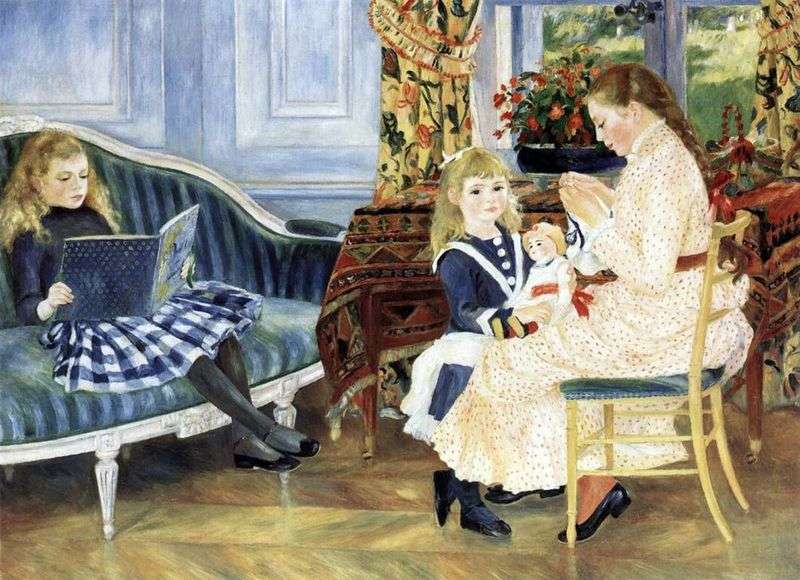
This picture is interesting not only from the point of view of the art of child portrait in the works of Renoir, but it also represents a new stage in the development of his pictorial writing, called “zhetskim” or “dry. Looking at this picture, it seems that Renoir fundamentally abandoned all the techniques inherent in impressionism.
A clear line, a clear silhouette, drawing, worked out in the smallest detail, completely eliminated any ambiguity of colorful spots. All the figures, objects, individual details, up to the red flower heads and the curly window handle, are drawn and spelled by Renoir with the greatest scrupulousness. Parquet floor sparkles reflected in it with the legs of chairs, sofa, table. The walls of the room, which serve as the background for portrait images, strike with an accurate pattern of panels and niches that convey the relief of the walls of the house.
The entire composition of the painting resembles a fresco, where three figures of Berar’s children are placed almost along one midline across the entire width of the canvas, and from the left side, sustained in blue and cold colors, the composition goes to the right side, where warm colors are amplified, up to bright yellow ocher and orange and red colors. This color movement is supported by a clear, almost contoured figure of girls’ figures, ranging from a ten-year-old Margherita spread out on a sofa with a book in her hands to a four-year-old Lucy standing with a doll resting on the knees of her older sister Martha.
The faces of the extreme figures are turned to each other, and between them there is no space for any compositional accidents that were so characteristic of Renoir earlier. This group portrait of a child emphasizes the peculiarity of the development of the compositional and painting technique of Renoir in the mid-80s… “
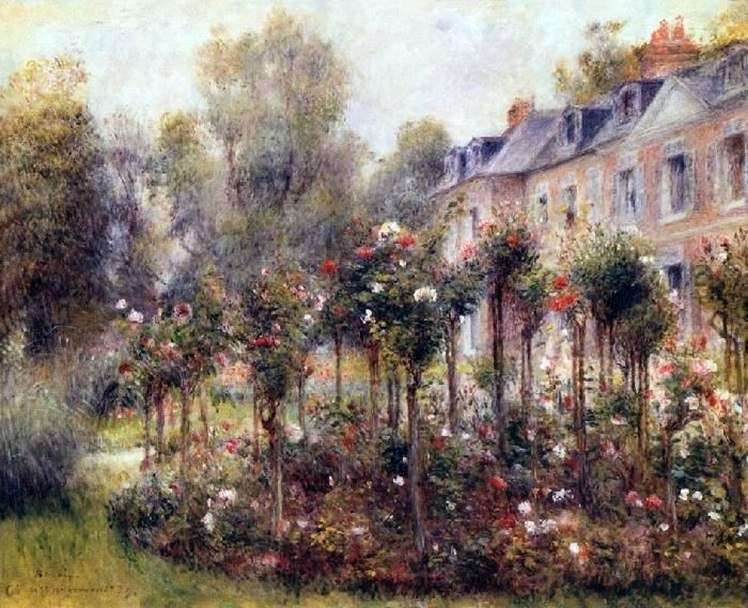 Rosary in Vargemont by Pierre Auguste Renoir
Rosary in Vargemont by Pierre Auguste Renoir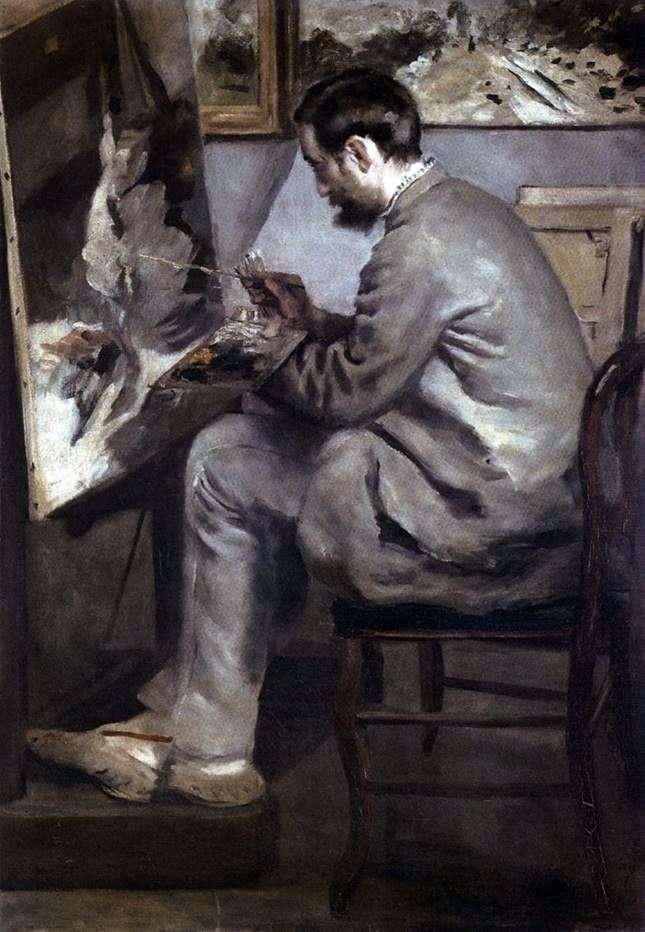 Portrait of Frederic Basil at the Easel by Pierre-Auguste Renoir
Portrait of Frederic Basil at the Easel by Pierre-Auguste Renoir Niños del mediodía en Vargemont – Pierre Auguste Renoir
Niños del mediodía en Vargemont – Pierre Auguste Renoir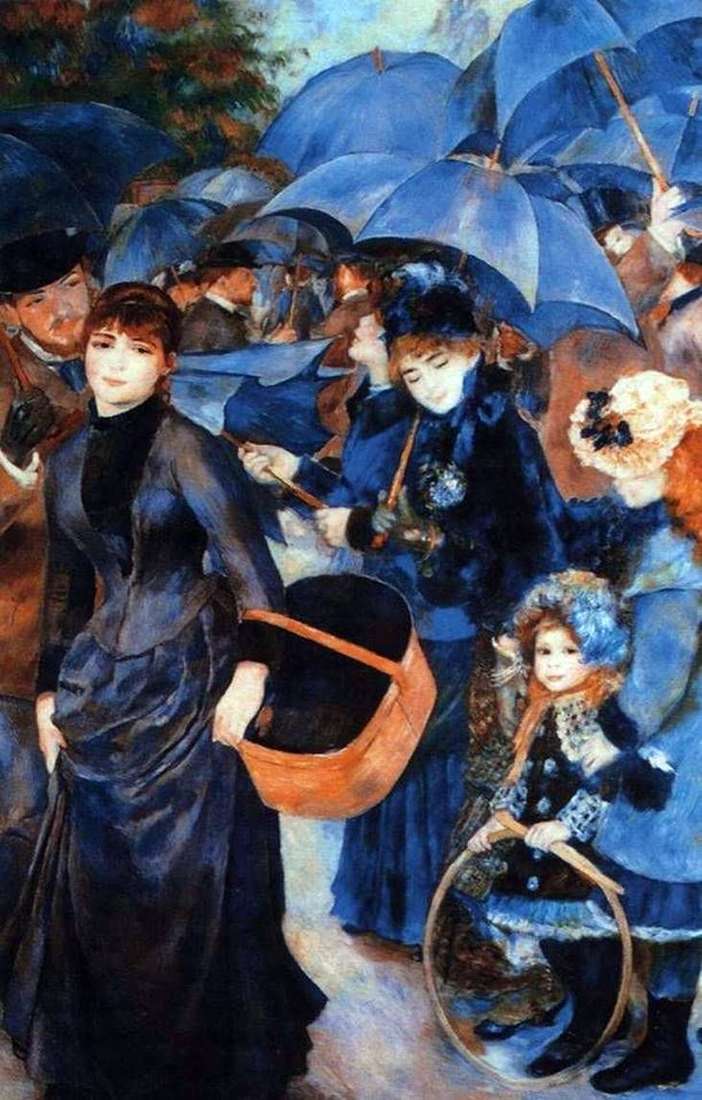 Umbrellas by Pierre Auguste Renoir
Umbrellas by Pierre Auguste Renoir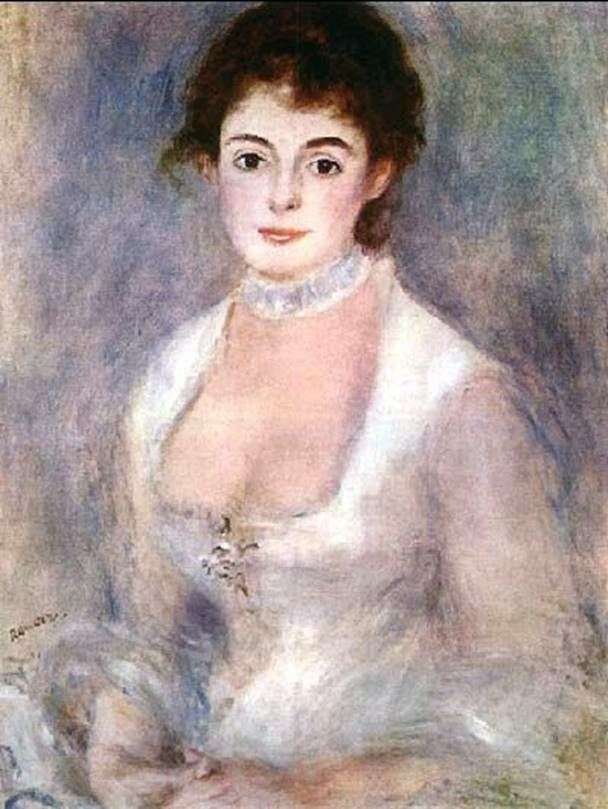 Henrietta Henriot by Pierre Auguste Renoir
Henrietta Henriot by Pierre Auguste Renoir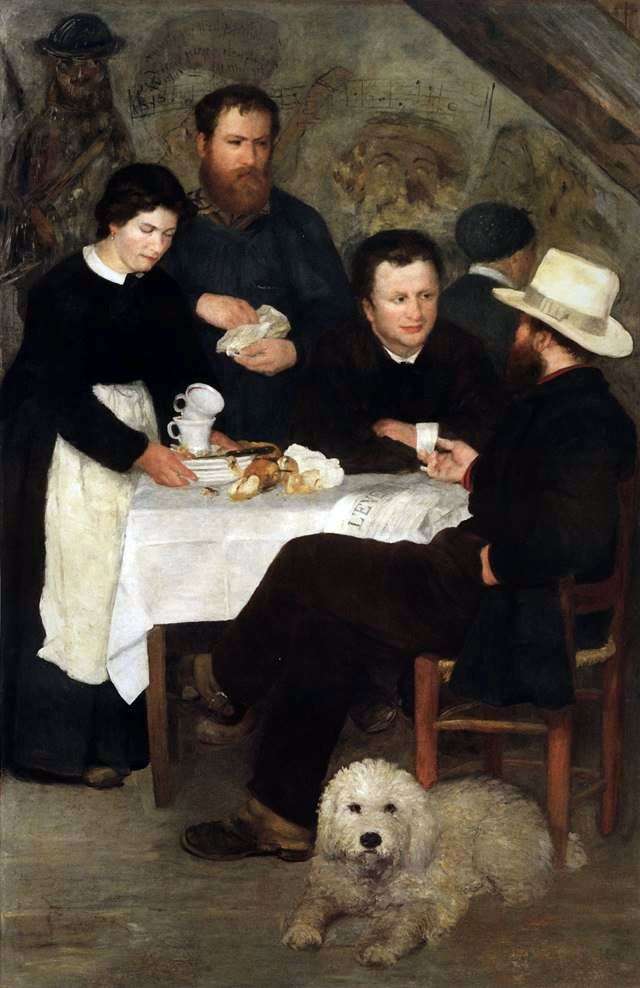 Mother Anthony’s Tavern by Pierre-Auguste Renoir
Mother Anthony’s Tavern by Pierre-Auguste Renoir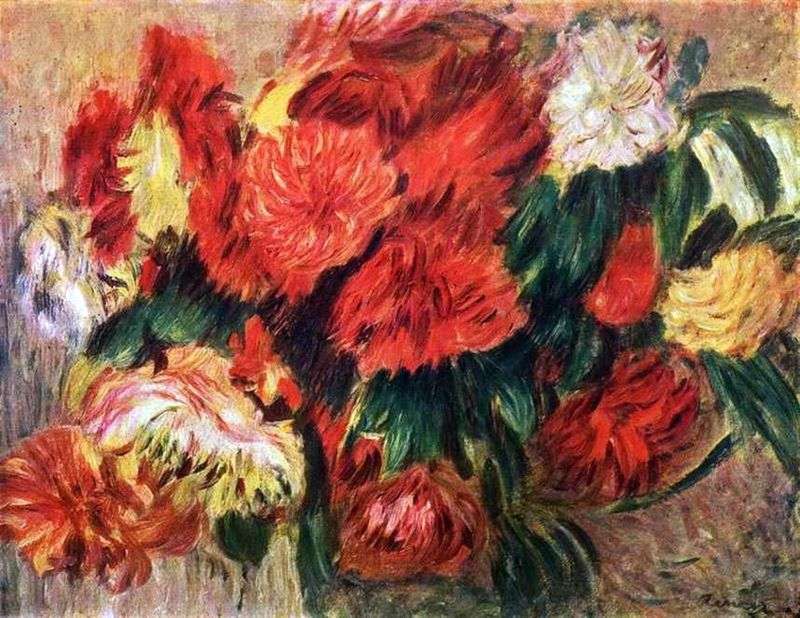 Still Life with Chrysanthemums by Pierre Auguste Renoir
Still Life with Chrysanthemums by Pierre Auguste Renoir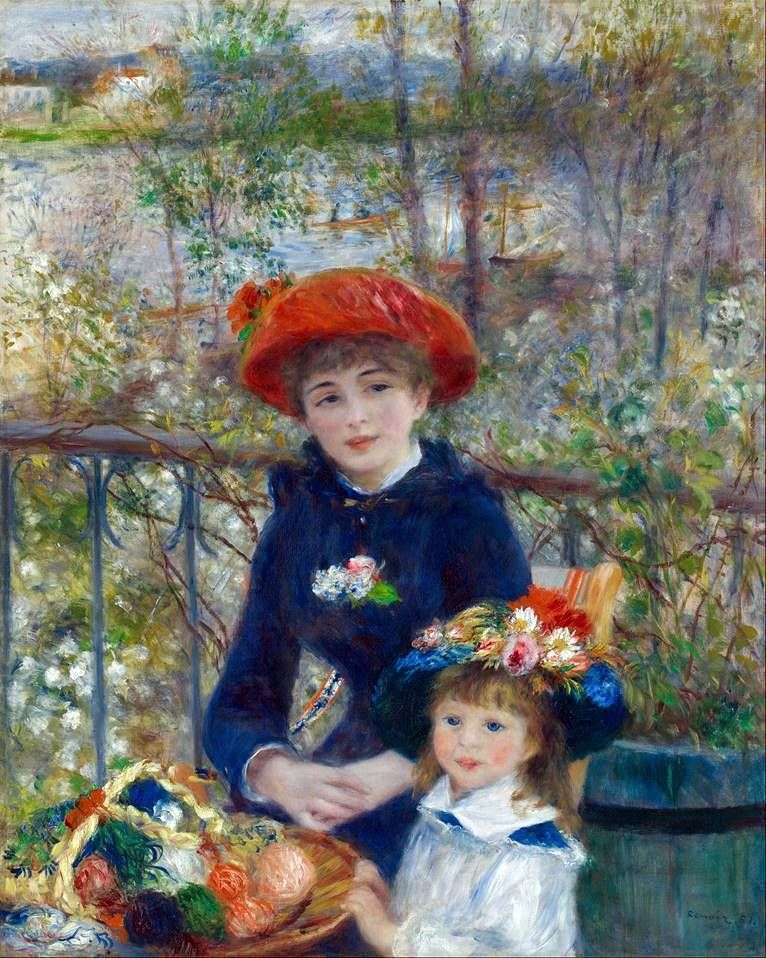 On the terrace (Two Sisters) by Pierre-Auguste Renoir
On the terrace (Two Sisters) by Pierre-Auguste Renoir